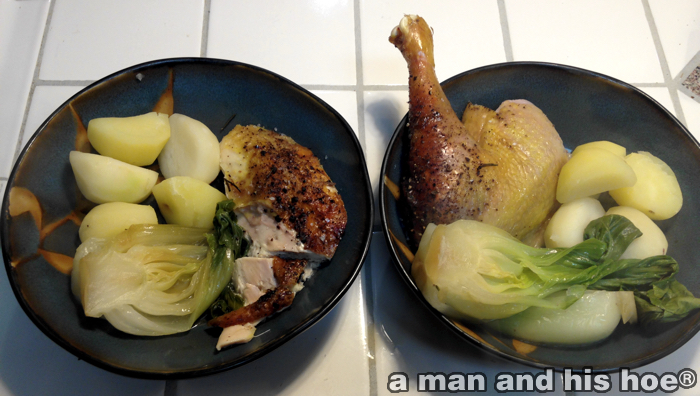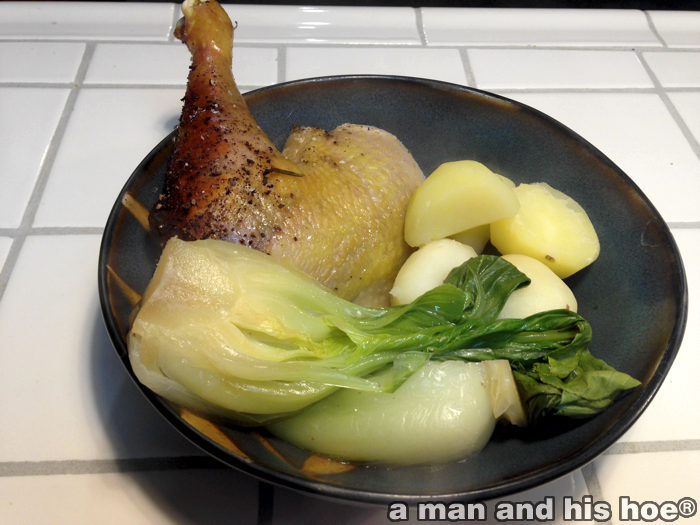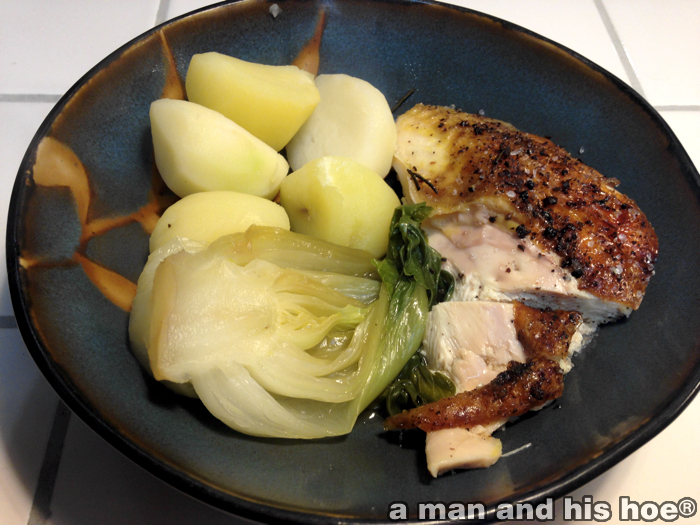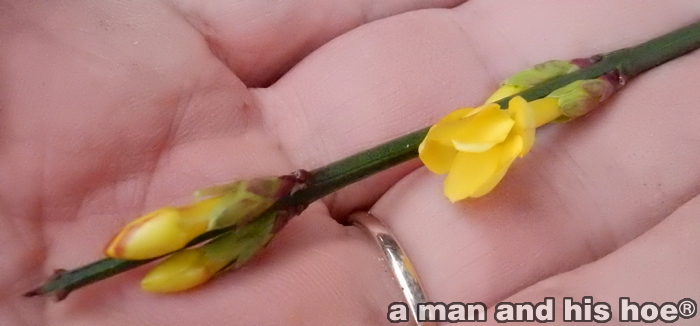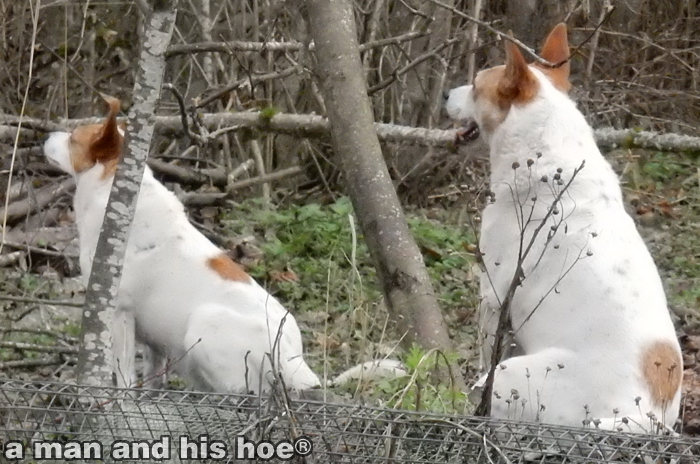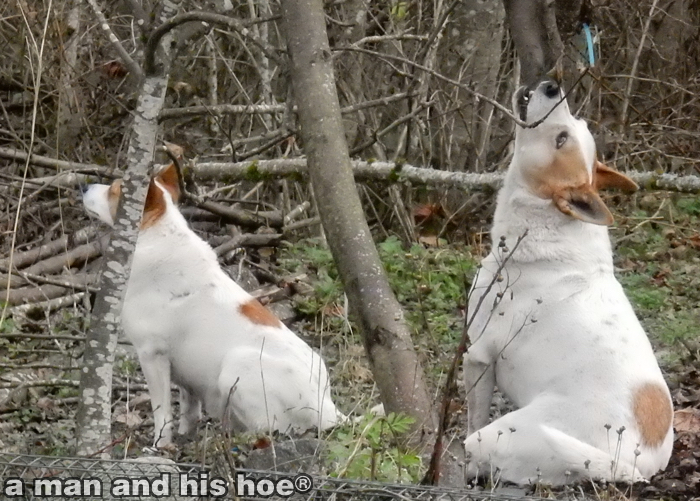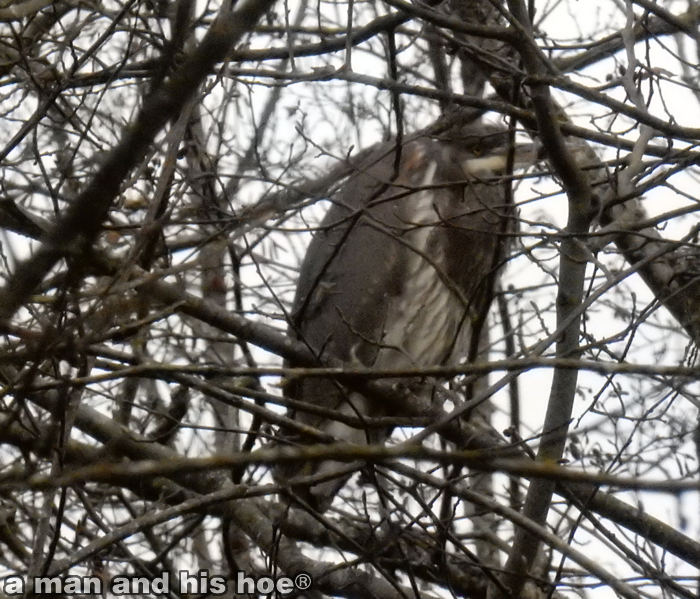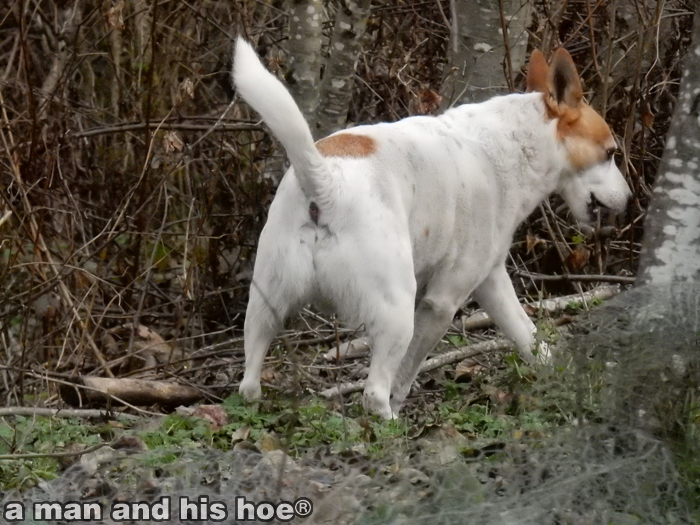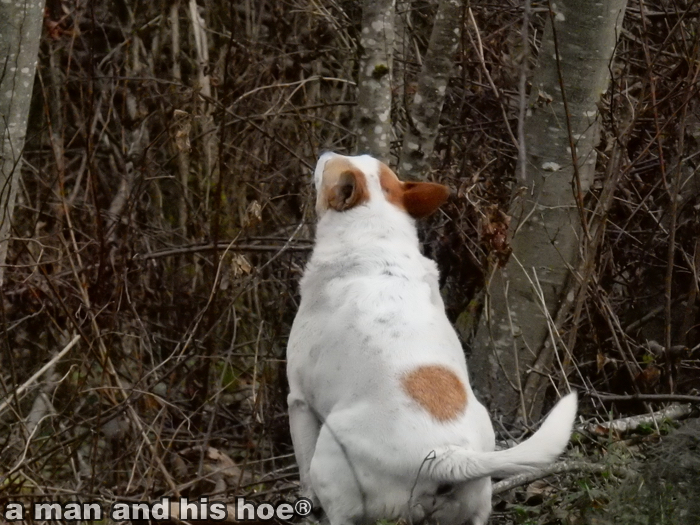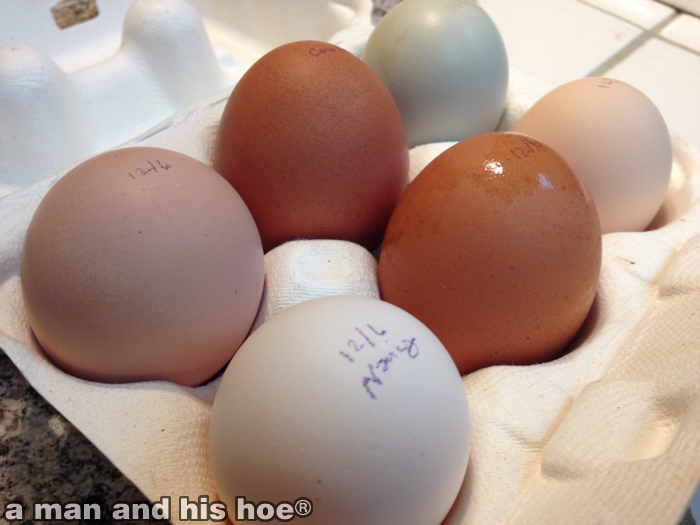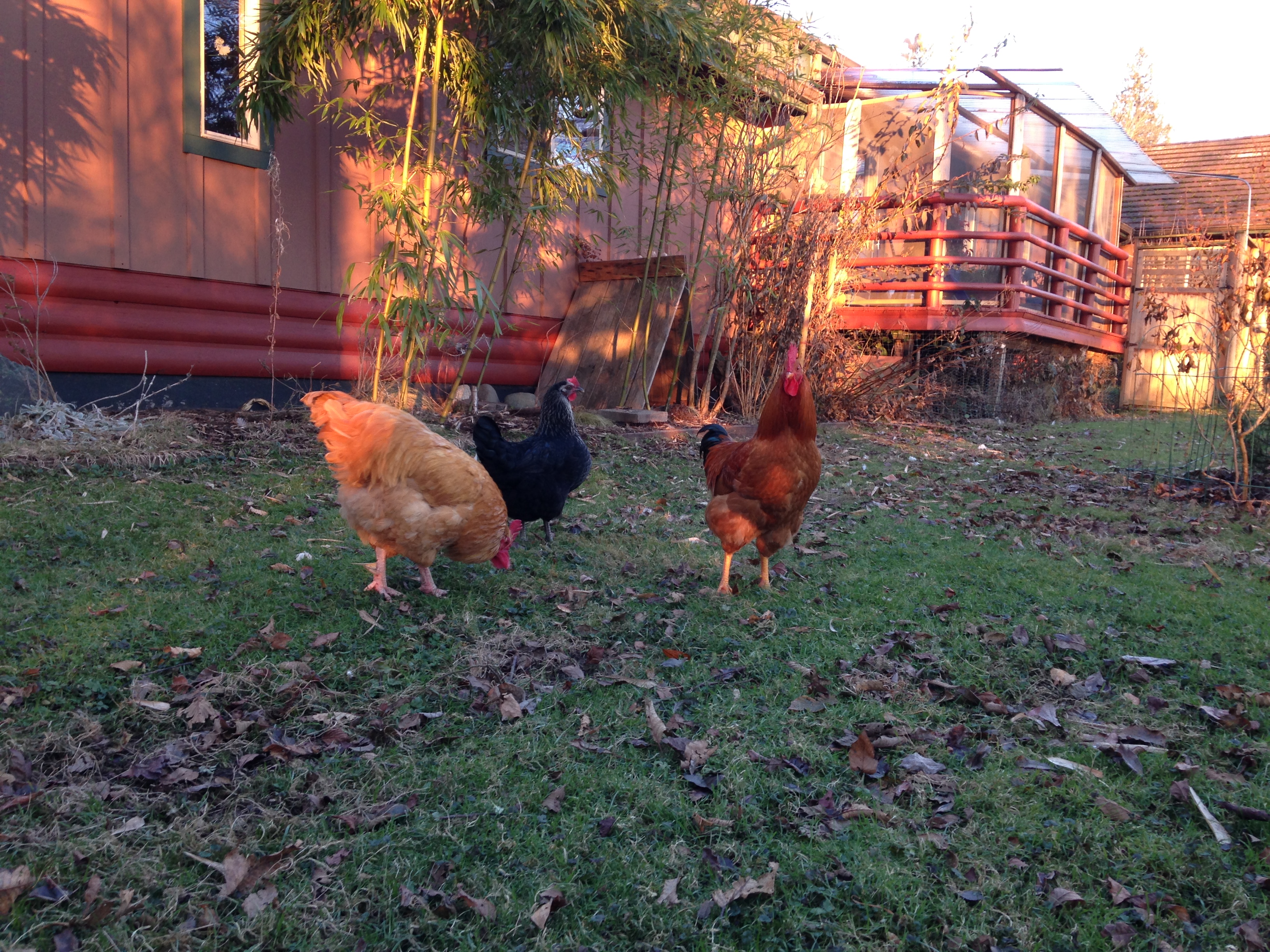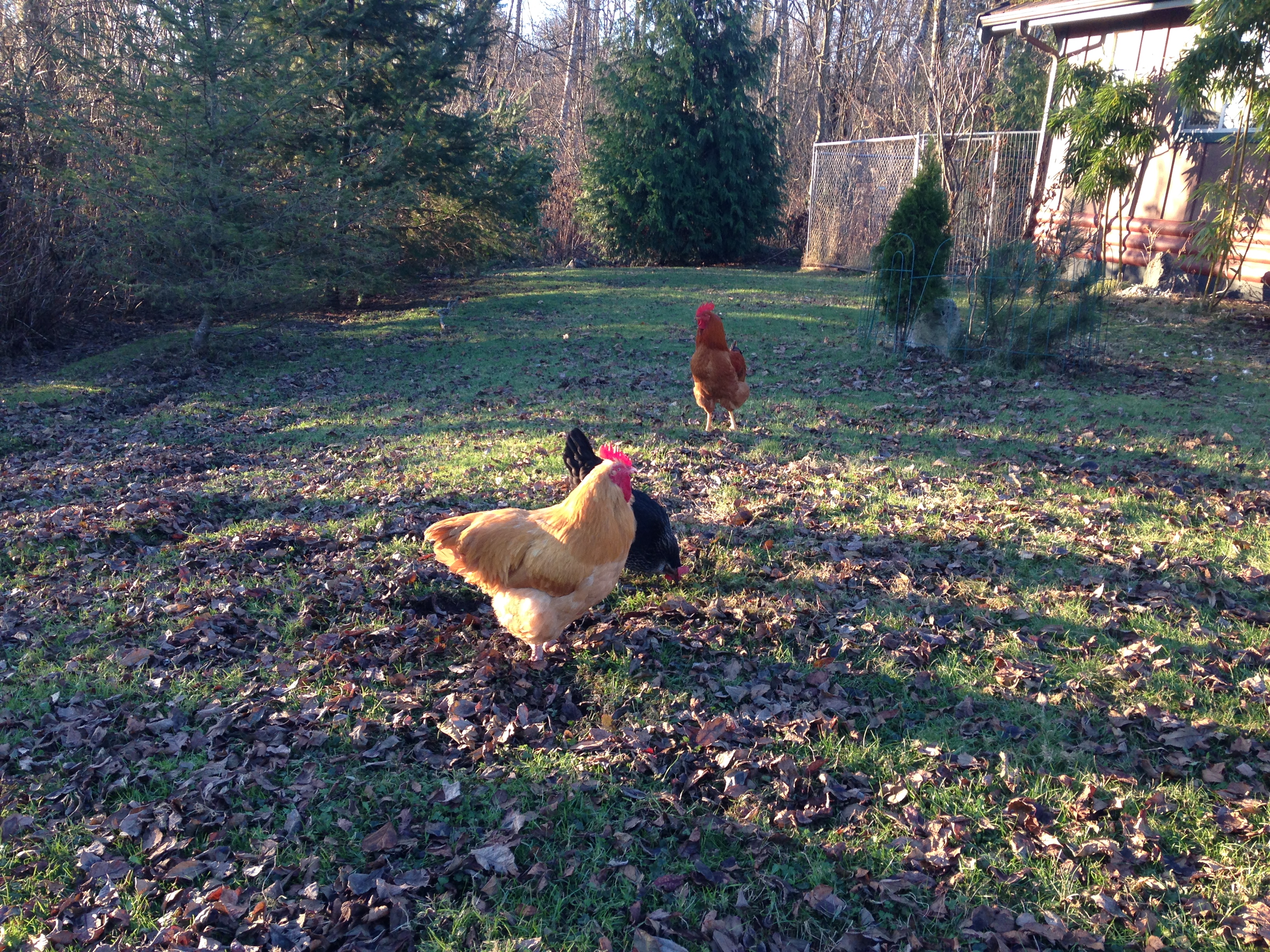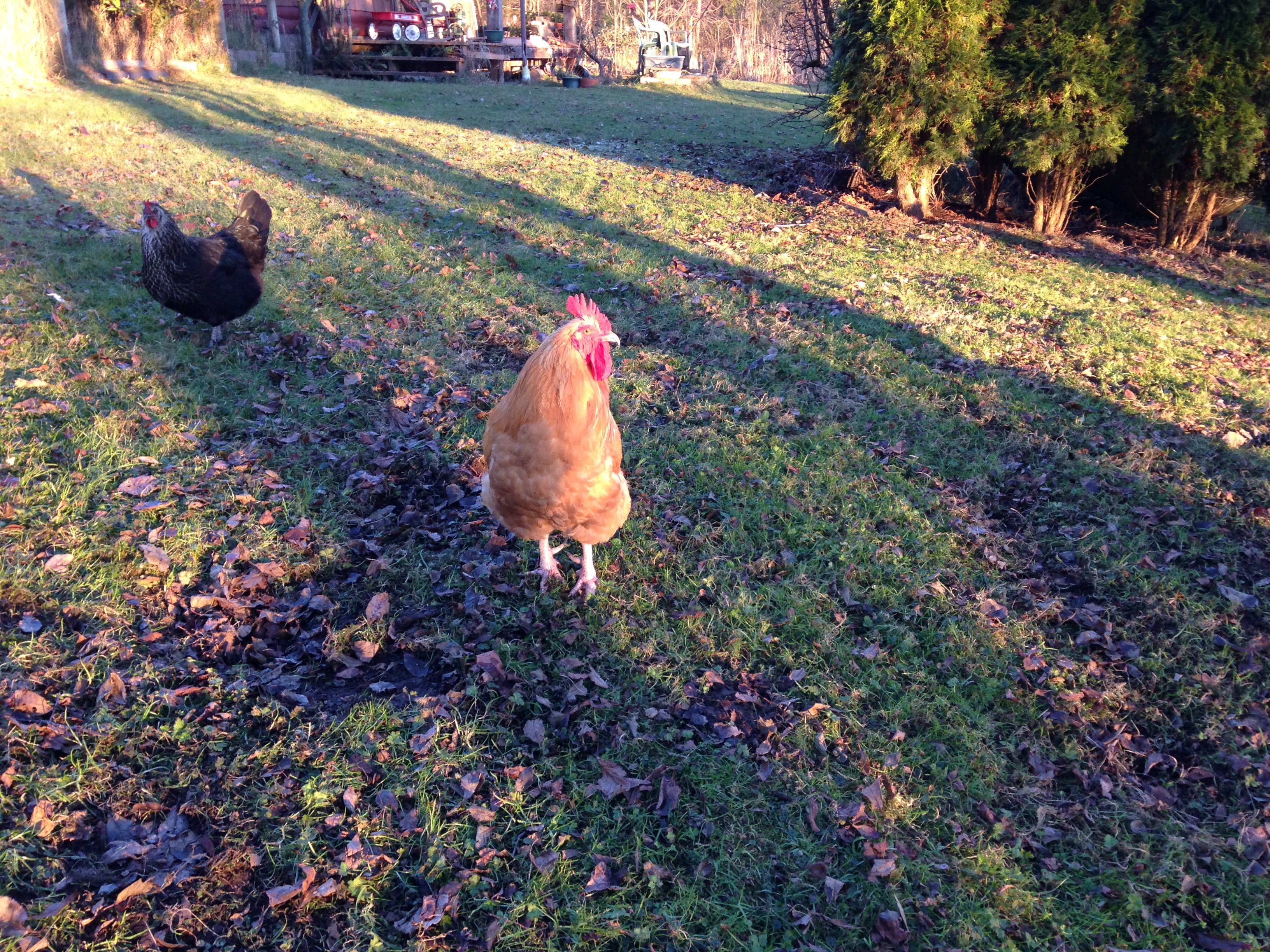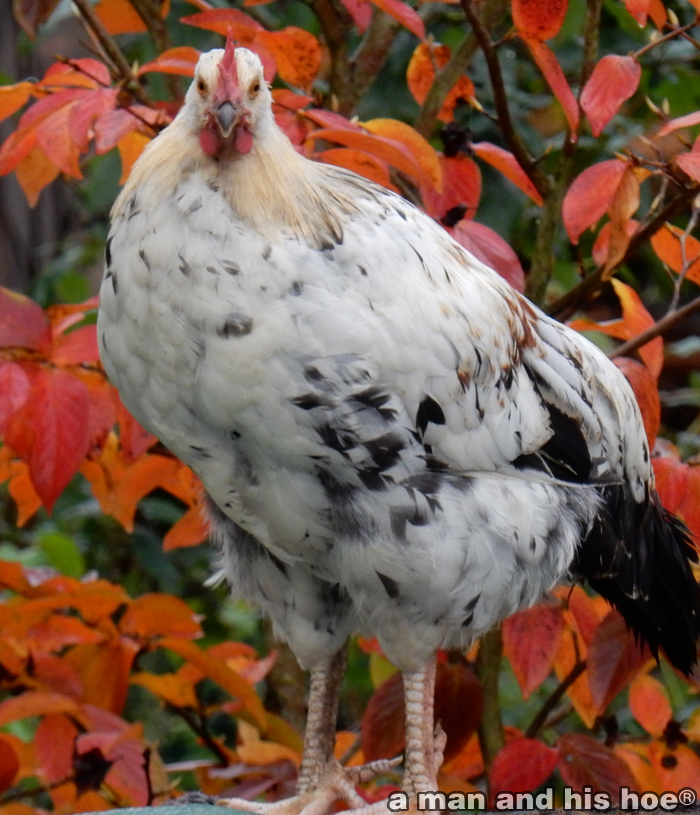
It takes a long time to make a sumptuous winter dinner. After growing slowly for eight months, the end has come for this rooster. Yes, it’s sad, but he did have a wonderful childhood, raised by a mother who cared for him. He spent a summer running around with his siblings, dashing through flower beds, chasing each other around the pond, playing hide and seek in the brush. And this fall, when he matured, he had plenty of romance.
But, I can only keep a select number of roosters, and this one did not make the cut. He was too aggressive with the hens and other roosters. The roosters that get to stay must have better manners and treat the hens with more care.
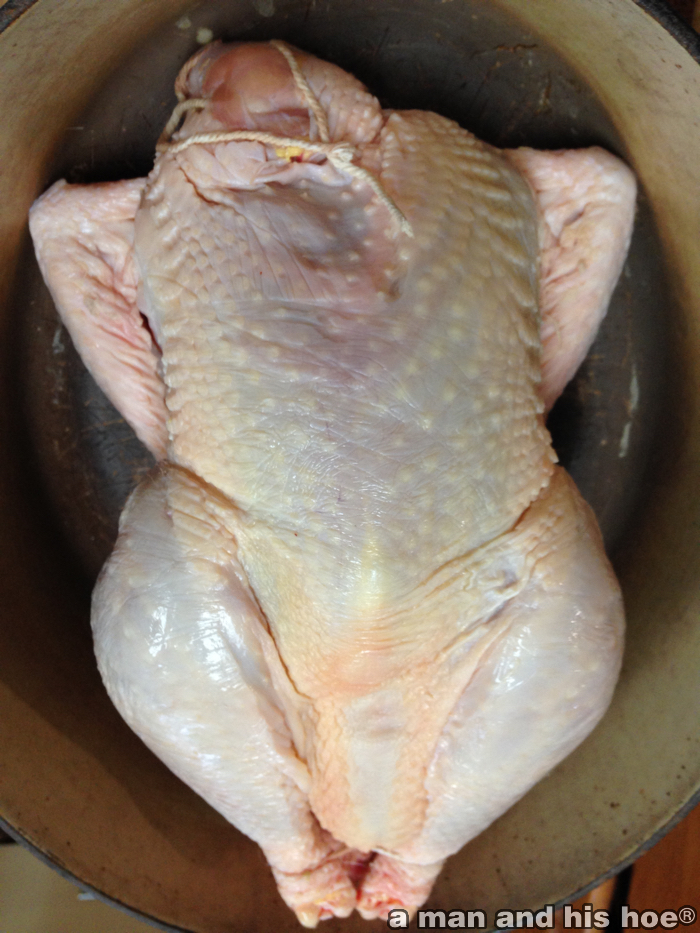
So into a covered pot he goes, salted, and dusted with crushed pepper and allspice, and laid to rest on a bed of rosemary.
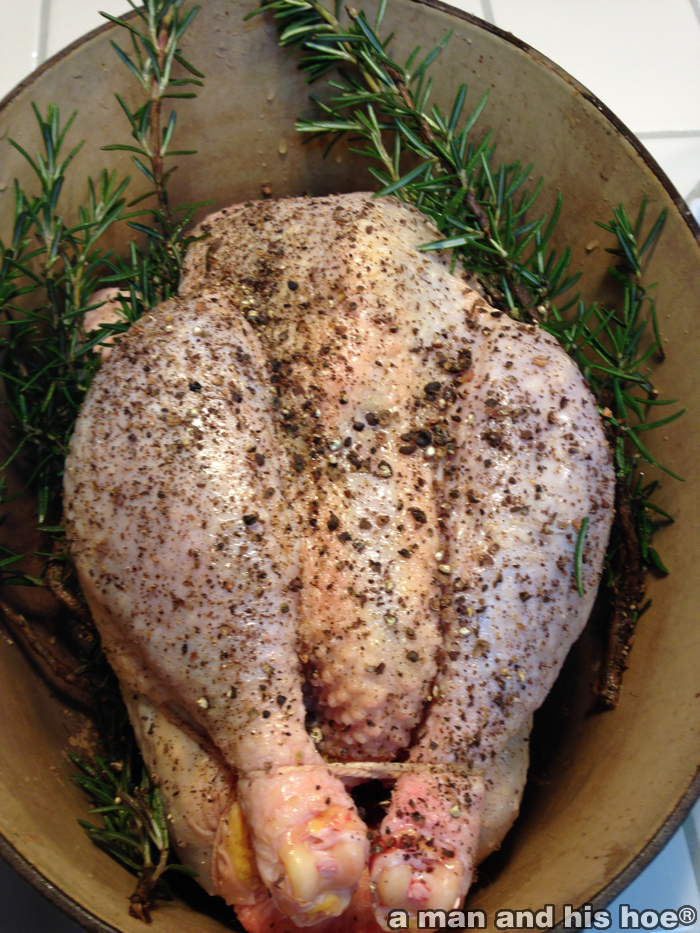
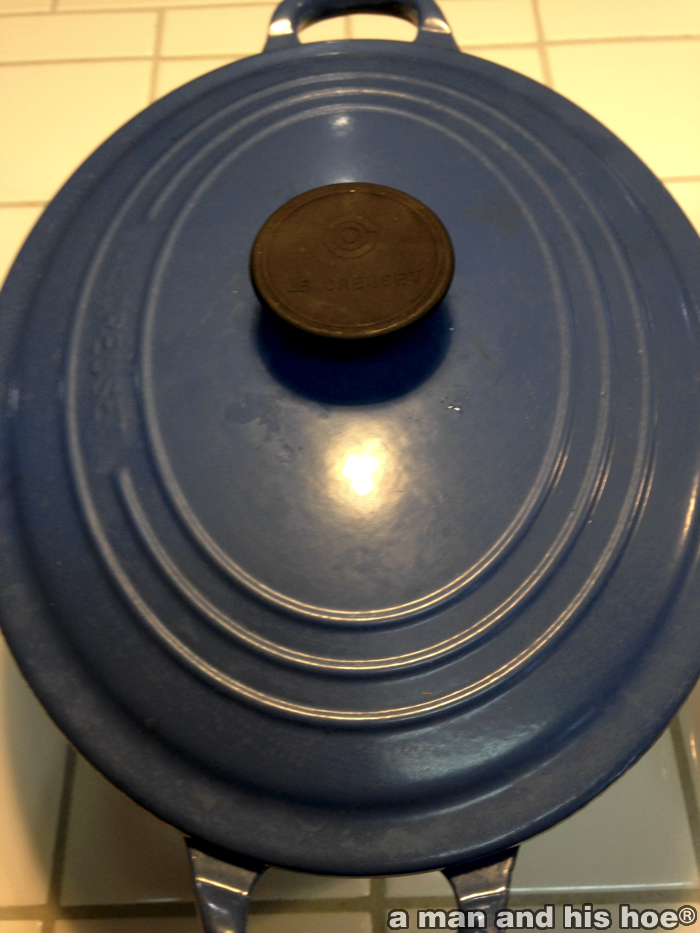
After four hours in a 200ºF oven, covered, and 15 minutes uncovered under the broiler, he’s nearly ready for dinner. All he needs to do now, is rest ten or twenty minutes before carving.
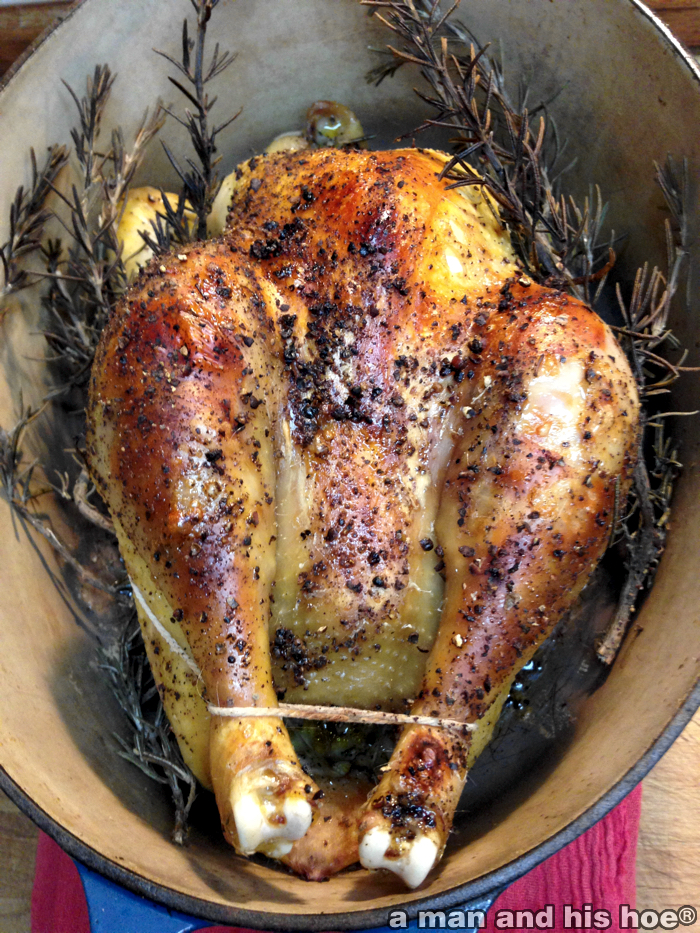
And finally, a simple feast, great for a December night.
